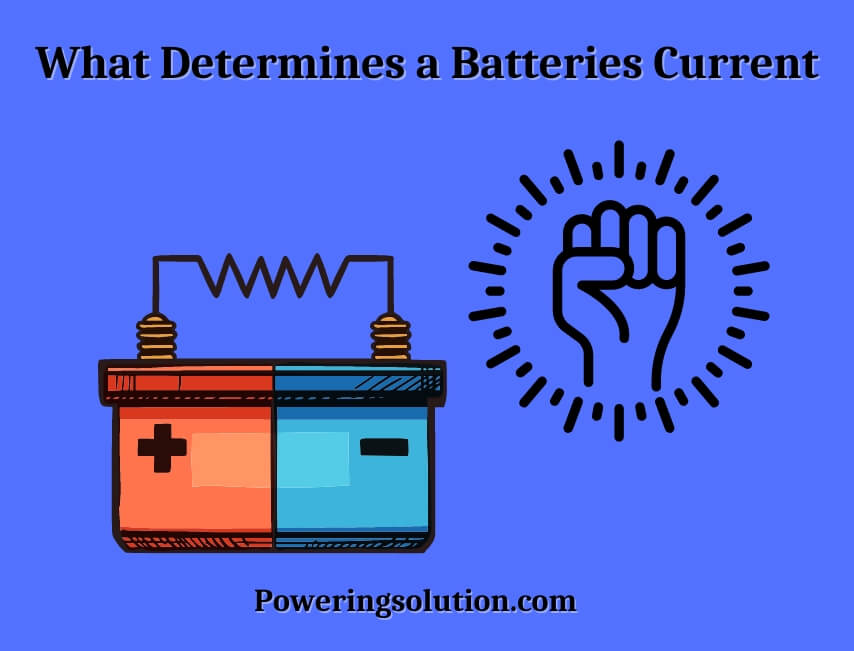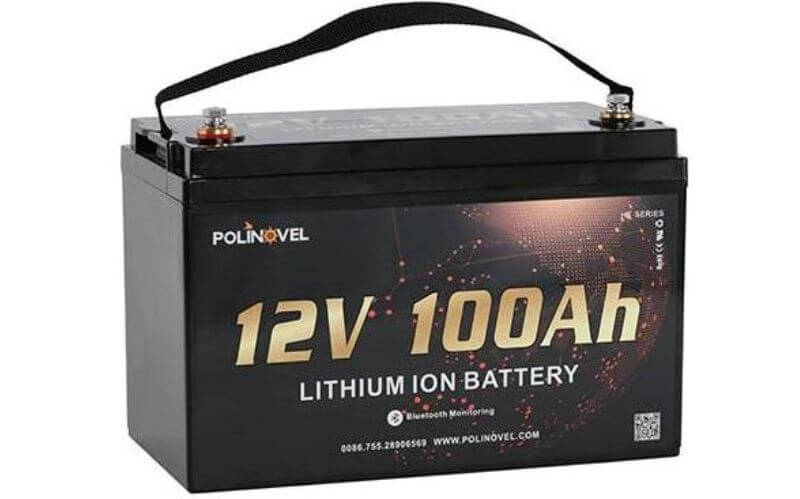Batteries have three primary components: the anode, the cathode, and the electrolyte. The anode is where oxidation occurs, releasing electrons that flow through the external circuit to the cathode. The cathode is where reduction occurs, accepting electrons from the anode and combining them with ions from the electrolyte.
The electrolyte is a solution that allows ions to flow between the anode and cathode while keeping the two separate.

Batteries come in all shapes and sizes, and each one has a different capacity. The size of the battery will determine the amount of power it can store, and how long it will last. But what determines the current that a battery produces?
There are two main factors: chemistry and age. The type of chemical reaction taking place inside the battery will determine how much current it can produce. And as batteries age, their performance declines, and they are unable to produce as much current as when they were new.
So if you’re wondering why your phone’s battery doesn’t seem to last as long as it used to, it’s probably because the battery is getting old and isn’t able to hold as much charge. You might need to get a new one!
How is the Current in a Battery Regulated?
A battery is a chemical device that converts stored chemical energy into electrical energy. The current in a battery is controlled by the flow of electrons through the cell. Electrons flow from the negative terminal to the positive terminal when the circuit is complete.
The amount of current in a battery is determined by the number of electrons flowing through the cell per unit of time.
How Can I Increase the Amount of Current a Battery Produces?
When a battery is connected to an external circuit, its chemical energy is converted into electrical energy. The amount of current a battery produces depends on the number and size of the cells in the battery, as well as the chemical reaction taking place inside the cells. The number of cells in a battery determines the voltage it produces.
The more cells there are, the higher the voltage will be. The size of each cell also affects how much current it can produce. Larger cells can store more charge and thus generate more current than smaller cells.
The chemical reaction inside the cells is what actually produces an electrical current. This reaction is between the positive and negative electrodes, with electrons flowing from the negative to the positive electrode. The rate at which this reaction takes place depends on various factors, including temperature, the concentration of reactants, and the surface area of electrodes.
Does the Battery Determine the Current?
No, the current is not determined by the battery. The battery only provides the potential difference that allows current to flow. The amount of current that flows depends on the resistance of the circuit.

What Current is Supplied by the Battery?
Assuming you would like a blog post discussing the current supplied by a battery: Batteries come in all shapes and sizes. The type of battery will determine the amount of current it can supply.
Current is measured in amps and is determined by the amount of charge flowing through a circuit per second. The faster the charge flows, the higher the current. The speed at which charge flows is determined by how much voltage is applied to the circuit.
Voltage is like water pressure; it pushes electrons through the circuit.
Battery Formula for Current
Batteries are one of the most important inventions of our time. They allow us to store energy and use it when we need it. A battery is made up of one or more cells.
Each cell has a positive and a negative electrode, separated by an electrolyte. When you connect the two electrodes, an electric current flows through the electrolyte and produces a chemical reaction that creates electrons. The electrons flow from the negative electrode to the positive electrode, creating an electric current.
The amount of current that a battery can produce depends on its size and chemical composition. The larger the battery, the more cells it has, and the more current it can produce. The chemical composition of the electrodes and electrolytes also affects the amount of current that a battery can produce.
A common type of battery is the lead-acid battery. Lead-acid batteries are used in cars and trucks because they can provide a large amount of current for starting engines. Lead-acid batteries have two types of electrodes: lead dioxide (PbO2) and graphite (C).
The electrolyte is sulfuric acid (H2SO4). When you connect the lead dioxide and graphite electrodes, electrons flow from the lead dioxide to the graphite, producing electricity. The formula for calculating Current in Battery is: I=V/R, where V is Voltage & R is Resistance.
How Does Current Flow Through a Battery in a Circuit?
Battery current is a measure of the flow of electrons through a circuit. It is measured in amperes and can be either direct current (DC) or alternating current (AC). The strength of the current depends on the battery voltage and the resistance of the circuit.
How Does Current Flow Through a Battery in a Circuit?
A battery is a device that converts chemical energy into electrical energy. It has two terminals, positive and negative, that are connected to a load, such as a light bulb or motor. When the circuit is closed and current flows through the load, the battery supplies the power.
The amount of current flowing through a circuit is determined by the resistance of the load and the voltage of the battery. The higher the resistance, the less current will flow. The higher the voltage, the more current will flow.
You can think of voltage as water pressure and resistance as friction in a hose. If you increase either one, more water (current) will flow through the hose (circuit).
Batteries come in many different sizes and voltages.
The most common household batteries are AA, AAA, C, D, and 9-volt. These batteries are all 1.5 volts except for the 9-volt which is 9 volts.
How Much Voltage is Generated From Each Cell of a Battery?
The average car battery has six cells that produce 2.1 volts each for a total of 12.6 volts. The voltage produced by each cell depends on the chemical reaction taking place inside the cell, and this can vary depending on the type of battery. For example, lead-acid batteries have a higher voltage when they are first used, but this drops off as the reactions continue and the battery is depleted.
I am often asked how long it takes to charge a 2500mAh battery. The answer, of course, depends on the charger being used and the voltage of the battery. Here is the answer.
How do I use a Battery Current Calculator?
Are you looking for a battery current calculator? Whether you are designing a circuit or trying to troubleshoot one, it is important to be able to calculate the current flowing through batteries. This tool makes it easy to do just that!
To use this calculator, simply enter the voltage of the battery and the load resistance. The calculator will then output the current flowing through the battery. You can also use this calculator to determine how long a battery will last, given its voltage and current rating.
This tool is essential for anyone working with batteries or electrical circuits. Give it a try today!
What is the Average Current of an AA Battery?
An AA battery is a single-celled device that converts chemical energy into electrical energy. It is the most common size of dry cell battery. The AA battery has a cylindrical shape and is composed of positive and negative electrodes, a separator, and an electrolyte.
The positive electrode is typically made of manganese dioxide while the negative electrode is made of carbon. The separator is usually a microporous film that prevents the electrodes from coming into contact with each other. When an external circuit is connected to the AA battery, electrons flow from the negative electrode to the positive electrode through the external circuit.
This flow of electrons generates an electric current. The amount of current produced by an AA battery depends on its size and chemistry. For example, an AA alkaline battery can produce a maximum current of 2-3 amps while an AA lithium-ion battery can produce up to 10 amps.
The capacity or life of an AA battery also depends on its size and chemistry. For instance, an AA alkaline battery has a capacity of about 6000-8000 mAh while anAA lithium-ion batteries have capacities ranging from 1500-3000 mAh.
What is the Battery Capacity of a Battery Power Unit?
A battery power unit is a device that provides backup power for devices that require electricity to operate. Most units are small, portable, and can be used to power a wide range of devices. Battery power units come in a variety of shapes and sizes and can be used to power everything from phones and laptops to larger devices like TVs and refrigerators.
Some units even have enough juice to jump-start a car! When shopping for a battery power unit, it’s important to consider the wattage rating (the higher the better) as well as the capacity (how long the unit will last before needing to be recharged). You’ll also want to make sure that the unit you choose is compatible with the devices you need to power.
In general, battery power units are safe and easy to use. Just be sure to follow the manufacturer’s instructions carefully, and always recharge the unit after use – just like you would with your phone or laptop.
Bottom Line
Batteries are one of the most essential components in electronic devices, so it’s important to know how they work. The three main things that determine a battery’s current are its voltage, resistance, and capacity. Voltage is the potential difference between the two ends of the battery and is measured in volts.
Resistance is the opposition to current flow and is measured in ohms. Capacity is the amount of charge that a battery can store and is measured in amp-hours (Ah).
